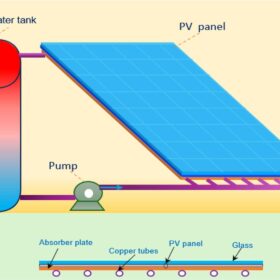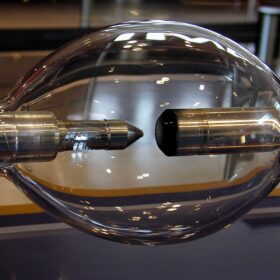Hydronic closed-loop cooling system for photovoltaic modules
An international research team has developed a closed-loop PV cooling system that can reportedly offer 24-hour continuous operation. The system is claimed to be particularly suitable for hot and arid regions and to improve the lifespan of solar panels by up to 8.2%.
New deterioration diagnosis tech for individual modules in PV panel strings
Conceived by scientists in Japan, the system consists of a a xenon flash lighting system and a detector capacitor. It can reportedly examine solar modules and find the degraded ones without disconnecting the string’s electrical wiring.
k-Nearest Neighbors algorithm for PV power forecasting
Scientists in Iraq used a k-Nearest Neighbors algorithm to evaluate the operational status of PV modules under various conditions, including partial shading, open circuit, and short circuit scenarios. They found that the overall performance of the model in predicting power output was “notably accurate.”
Recursive least squares algorithms to detect abnormal operation in PV systems
Scientists in Spain have implemented recursive least squares (RLS) algorithms for anomaly detection in PV systems and have found they can provide “more realistic and meaningful assessment” than traditional energy analysis.
Detect quality risks to avoid losing entire projects
The multiple failures of a 10 MW floating photovoltaic (FPV) installation were the subject of an in-depth quality analysis at pv magazine’s Focus event, held as part of The smarter E Europe in Munich, Germany.
Reducing PV module temperature with cooled air from the ground
Researchers from Iraq have used computational fluid dynamics to simulate the operation of a 100 W panel with ground cooling. The proposed technique was reportedly able to reduce panel temperature by up to 28%, with power generation increasing by up to 6.5%.
Monitoring PV plants with 3D remote sensing data
Scientists in Spain have developed thermal image mapping on dense and high-resolution point clouds representing status and geometry of PV modules and automatic identification of individual solar panels in 3D space. The proposed methodology was found to provide “exceptionally high” accuracy.
PV string fault detection technique based on multi-layer neural network
Scientists in India have proposed using a multilayer neural network to find line-to-ground, line-to-line, and bypass diode faults in PV module strings. They tested the new approach on a 22.5 kW solar array and reportedly achieved “competitive” accuracy results.
Using commercially available inverters for daylight photoluminescence imaging
An Australian research group has used an SMA inverter to switch the operating point of a PV array and has demonstrated its ability to create photoluminescence images for both rooftop and large scale solar installations.
Glint Solar adds PV degradation maps to utility-scale developer software
The Norwegian PV planning software company said it added the new PV degradation maps to pinpoint site locations with favorable climatic conditions.










